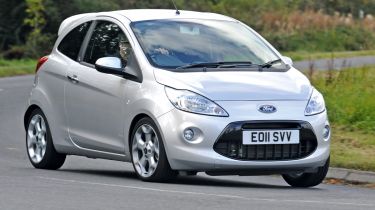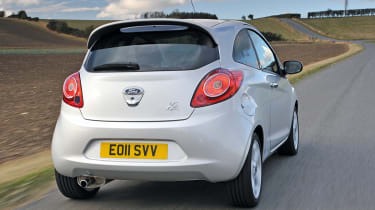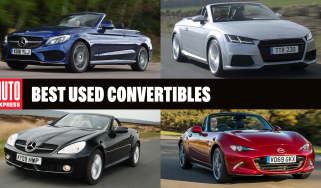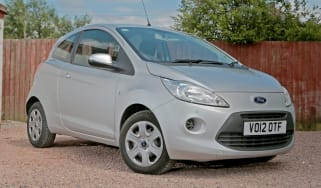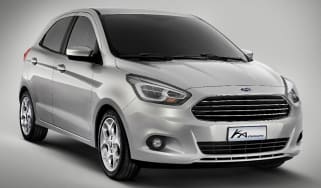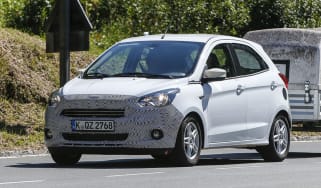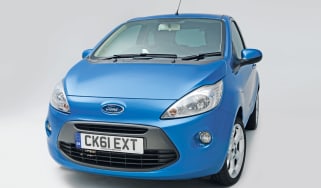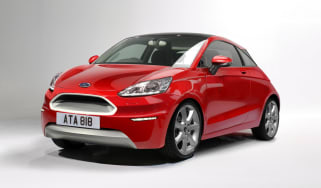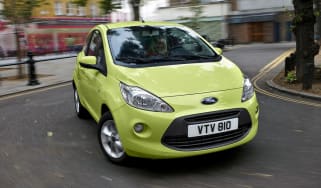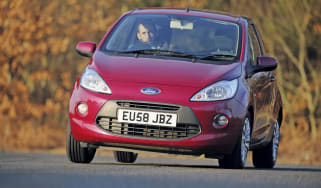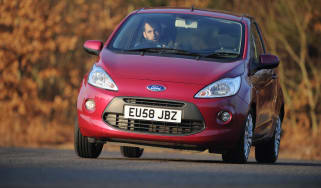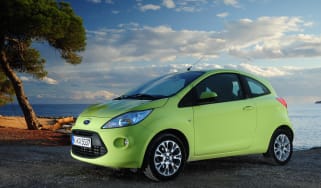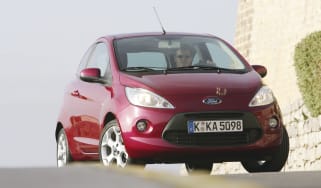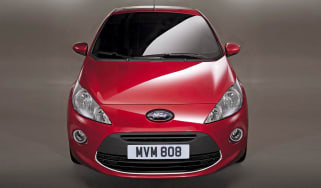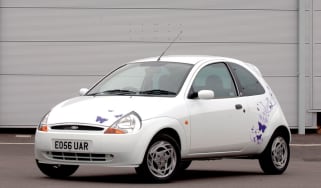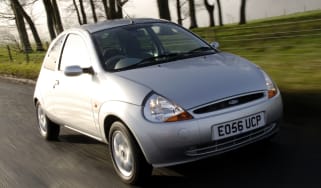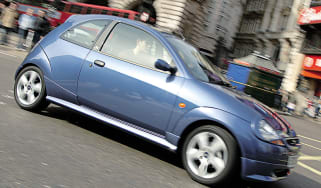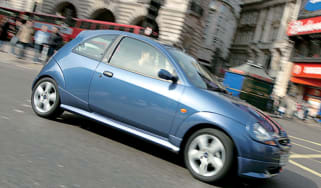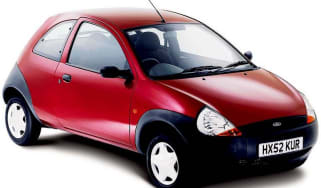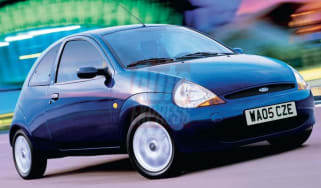Ford Ka review (2008-2016)
The Ford Ka looked stylish, but it lagged some way behind the city car class leaders

The second-generation Ford Ka felt dated from behind the wheel and couldn’t match more modern city car rivals such as the Skoda Citigo, SEAT Mii, Volkswagen up! and Hyundai i10 for refinement, low running costs or sharp handling.
To be fair, Ford gave the Ka’s suspension a thorough overhaul, so it had sharper handling and a more controlled ride than the Fiat 500 with which it was co-developed. It was also a fraction more refined.
• Best city cars to buy right now
But the Ka also had to give best to rivals for practicality. Not only was it hobbled by a smaller interior and boot, the Ford was only available in three-door guise.
The Ka may have lost the grown-up driving dynamics and fun-filled character of the original model, but it still looked smart. And the comprehensive line-up meant there was a version for every taste and budget.
The Ford Ka was a staple of Ford's small car line-up ever since the first generation arrived in 1996. That car featured radical looks and Ford's trademark engaging handling, and proved to be a runaway success for the firm, even though it started life with a variant of the ancient Kent engine, a unit that originally appeared in 1959!
Used - available now

2022 Peugeot
E-2008
17,336 milesAutomaticElectric
Cash £13,400
2021 Peugeot
2008
9,432 milesManualPetrol1.2L
Cash £15,100
2023 Jaguar
I-PACE
23,066 milesAutomaticElectric
Cash £21,697
2024 Kia
Stonic
18,073 milesAutomaticPetrol1.0L
Cash £15,002The original Ka featured concept car looks - it was a development of a Ghia design study - and the car's 'New Edge' styling language was a staple of Ford's designs for many years. The Ka Mk1 remained on sale for 12 years, and in that time earned a reputation for delivering fantastic handling while being cheap to run, although poor build quality and rust were always an issue.
Still, Ford took advantage of the Ka's popularity with a host of special editions, especially towards the end of its run. In addition, the SportKa added some mild hot hatch fun to the mix with sporty looks and a revvy 1.6-litre engine, while the StreetKa was a two-seater convertible variant that shared its looks with the SportKa.
The Ka Mk2 was launched in 2008, but under its fashionable skin was an all-new platform, which was shared with the Fiat 500 and Panda. In fact, the Ka was even built at the same factory in Tychy, Poland.
There was a diesel option for a while, but it hardly made sense in a city car such as the Ka, so the only engine we would recommend is the 68bhp 1.2-litre four-cylinder petrol, sourced from Fiat. This came with a five-speed manual gearbox, and like the Mk1 there was no automatic option.
The basic trim range remained largely unchanged throughout the Ka Mk2 production run. There was basic Studio, higher-spec Style, Grand Prix and Zetec trims (including Zetec Black and Zetec White specials) and the posh Titanium version.
All cars featured electronic stability control and stop-start as standard, while the original Ka Mk1's black plastic bumpers made way for body colour bumpers across the range. The best-selling Ka Zetec added big-car extras such as air-conditioning, electric windows, a heated windscreen and a leather steering wheel. Bluetooth, a USB port and a multifunction steering wheel could be added as no-cost options on all models except the entry-level Studio Connect.
As with many of the Ka Mk2's rivals, you could add a variety of personalisation options too. For instance, there were a number of bold bodywork decals, larger alloy wheels and even a kit to lower the suspension.
The Ka's rivals included the aforementioned Fiat 500 and Panda, as well as the usual city car suspects, including the VW up!, SEAT Mii and Skoda Citigo trio, the Citroen C1, Peugeot 107/108 and Toyota Aygo triplets, the Hyundai i10, Kia Picanto, Renault Twingo and higher spec versions of the Dacia Sandero.
The Ka Mk2 was replaced in late 2016 by the all-new Ford Ka+ which was based on the Fiesta and has a five-door body.
